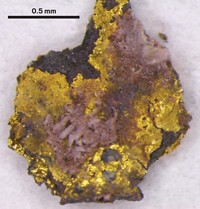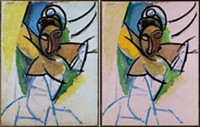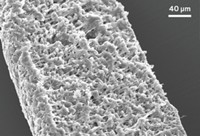Advertisement
Grab your lab coat. Let's get started
Welcome!
Welcome!
Create an account below to get 6 C&EN articles per month, receive newsletters and more - all free.
It seems this is your first time logging in online. Please enter the following information to continue.
As an ACS member you automatically get access to this site. All we need is few more details to create your reading experience.
Not you? Sign in with a different account.
Not you? Sign in with a different account.
ERROR 1
ERROR 1
ERROR 2
ERROR 2
ERROR 2
ERROR 2
ERROR 2
Password and Confirm password must match.
If you have an ACS member number, please enter it here so we can link this account to your membership. (optional)
ERROR 2
ACS values your privacy. By submitting your information, you are gaining access to C&EN and subscribing to our weekly newsletter. We use the information you provide to make your reading experience better, and we will never sell your data to third party members.
Analytical Chemistry
One Mona Lisa Mystery Solved
Chemistry and Art: Da Vinci achieved his amazing shadowing by using many strokes of pigmented glaze
by Sarah Everts
July 16, 2010
| A version of this story appeared in
Volume 88, Issue 30

The expression of the “Mona Lisa” is ever inscrutable, but researchers at the Louvre Museum in Paris have figured out one of the secrets of her lovely skin. Specifically, they are reporting how Leonardo da Vinci painted shadows on her face without seeming to use any actual brushstrokes—a technique discussed so extensively that curators have given the shadowing style a name, sfumato, which means smoke in Italian. Although art experts have long known that glaze on top of the paint contributed to sfumato shading, this is the first time scientists have measured the thickness and chemical content of the sfumato glaze brushstrokes.
A team of scientists led by Philippe Walter, a chemist at the Center for Research & Restoration of the Museums of France, located at the Louvre, used a portable, noninvasive technique called X-ray fluorescence spectroscopy to analyze the faces of seven of da Vinci’s masterpieces, including the “Mona Lisa” (Angew. Chem. Int. Ed., DOI: 10.1002/anie.201001116).
The team found that in regions where da Vinci shadowed faces, he typically laid down a priming layer of lead white paint, followed by a layer of flesh tone paint. Next came the shadowing glaze coat, followed by a final varnish layer. Da Vinci added small quantities of inorganic pigments—such as oxides of manganese, calcium, or iron—to the mostly translucent organic glaze, which is made of linseed and resin, Walter explains. The smoky, seamless shadowing is effectively a multitude of up to 30 very thin brushstrokes, some just a few micrometers thick, of the pigmented glaze.

“This is the first data on the sfumato glazes of da Vinci,” comments Bruno Brunetti, a conservation chemist at the University of Perugia, Italy. “It’s a great demonstration of how to apply a noninvasive technique to studies of artwork that would otherwise never be carried out. Nobody will ever be allowed to take a sample of the ‘Mona Lisa,’” he says. In fact, even doing the X-ray fluorescence required the researchers to wait for the one day per year that Louvre officials permit the “Mona Lisa” to exit her protective case, Walter says.
Besides the “Mona Lisa,” the Louvre team analyzed other famous da Vinci paintings such as “Saint John the Baptist,” and “Saint Anne, the Virgin and the Child.” In the latter artwork, the team found that da Vinci shadowed different faces in the painting by using glazes containing different inorganic pigments. Da Vinci might have been purposely shadowing faces with different glazes, Walter says. Or the difference could just be the consequence of the artist’s tendency to work on paintings for several decades; da Vinci may have just altered his recipe over the years, Walter notes.
Next up, Walter says his team is replicating some old recipes for glazes to understand how da Vinci could have even applied brushstrokes that were just micrometers thick. “It’s an issue of rheology. Leonardo da Vinci needed to increase the fluidity in order to put such thin layers,” Walter adds. They are also going to investigate the glaze layers of other painters that used the sfumato technique, such as the Italian Renaissance painter Rafael and the Flemish painter Rogier van der Weyden.





Join the conversation
Contact the reporter
Submit a Letter to the Editor for publication
Engage with us on Twitter